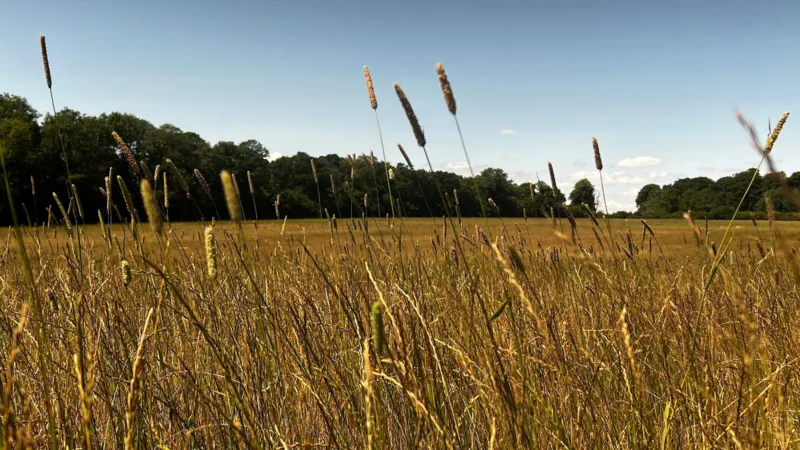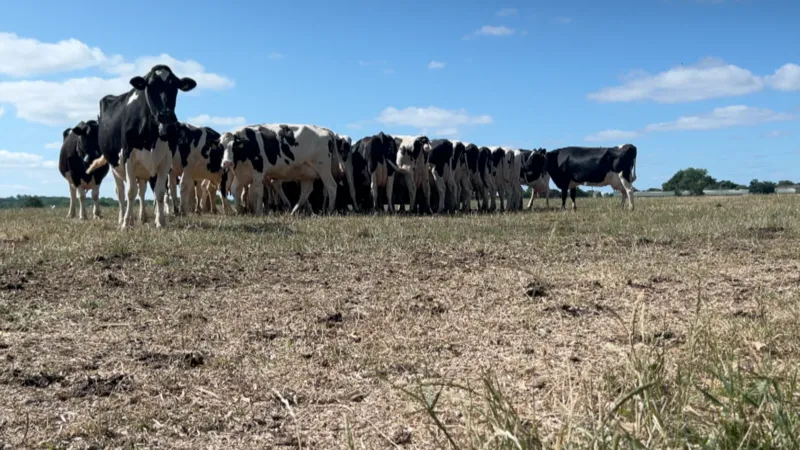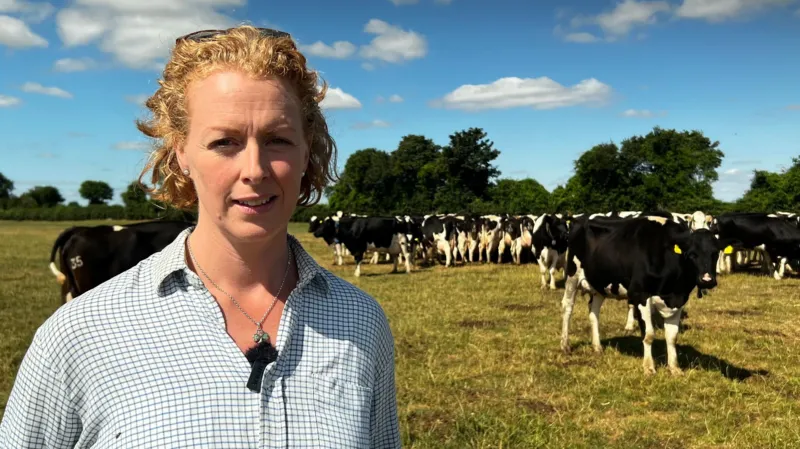Across England’s rural landscape, a troubling emergency is unfolding. In what some are calling a “Harvest That Never Came,” relentless drought conditions have left grazing fields parched and barren, affecting the heart of the farming economy. Where once there were lush, green pastures, many farmers now see cracked earth and brittle stalks. The consequences extend beyond the landscape—it’s an economic and emotional crisis for families who depend on the land.
“I’ve never seen my paddocks so dry in all my years of farming,” says James Turnbull, a livestock farmer from Suffolk. “The grass won’t grow, and my animals have nothing to eat. Feeding them is rapidly becoming unaffordable. It’s a nightmare.”
💔 A Chain Reaction of Despair

The loss of grass in England’s fields is undermining the entire livestock sector. Farmers who raise cattle, sheep, and goats are making tough choices, selling animals at reduced prices to avoid starvation in their herds.
Livestock markets now see a surge of thin, underfed animals as more farmers try to cut their losses. With oversupply, prices fall, leaving farm owners struggling to cover basic costs and support their families.
“The whole supply chain is under stress, from buying expensive feed to losing money at market,” said Charlotte Green, a sheep farmer in Yorkshire. “We need immediate relief if we’re going to survive this season.”
📉 Economy Under Threat

Agriculture forms a backbone of rural England, supporting not just farms but local communities and economies. Ongoing drought threatens more than just crops.
Food price inflation is rising as limited grass means higher feed and supply costs, which can be passed down to consumers. The nation also faces growing risks to food security as persistent drought reduces overall livestock health and productivity, threatening future supplies.
As struggling farms reduce business, rural hardships deepen, affecting local shops, transport, and services that depend on agricultural revenue.
“Drought is a warning sign for our economy,” said Dr. Elaine Cartwright, an agricultural economist. “If farmers can’t produce, everyone feels the impact.”
🔄 Adaptation and Innovation: A Flicker of Hope

Despite grim conditions, some farmers are seeking solutions. Agronomic research and startup companies are promoting solar-powered irrigation systems and more effective water use.
Encouragement of drought-resistant grasses and innovative feeding practices is gaining traction.
In many villages, farmer cooperatives are forming feed banks—mutual support systems to pool resources and help those most affected. Government agencies are fast-tracking grants for emergency feed and water supply as part of wider climate response measures.
“Farming’s future relies on how we adapt. Droughts will come—but with resilience, we persevere,” said William Harris, a farming advisor in Kent.
💬 Quote of the Day
🗣️ “When the roots are deep, there is no reason to fear the wind.” — African Proverb
🛠️ What Needs to Happen Now
The crisis calls for decisive action. Emergency feed and water relief must be made available for struggling farms. There is a growing demand for robust, government-backed insurance programs to protect against climate volatility.
Experts call for increased investment in adaptive technology, drought research, and sustainable water management. Additionally, support systems must be extended to family-run and smallholder farms, which are often hit the hardest.
While the drought endures, England’s farmers continue the fight to protect their livelihoods and food supplies. What’s needed is swift support, community cooperation, and innovative approaches to safeguard the future of the countryside. The fields may be brown today, but with unity, urgent intervention, and ingenuity, this crisis can become a catalyst for transformation—turning hardship into new resilience.
